
Fairy floss, also known as cotton candy, is a beloved treat enjoyed by people of all ages. The sweet, fluffy confection is a staple at carnivals, fairs, and amusement parks around the world. But where did this sugary delight come from, and how has it evolved over time?
The History of Fairy Floss

The origins of fairy floss can be traced back to the late 19th century, when a dentist named William Morrison and a confectioner named John C. Wharton invented a machine that could spin sugar into fine strands. They called their creation "fairy floss," and it quickly became a hit at the 1904 World's Fair in St. Louis.
Over the years, fairy floss has undergone many changes and variations. Today, it comes in a variety of flavors and colors, and can be found in many different forms, from pre-packaged bags to giant, fluffy cones.
How Fairy Floss is Made

The process of making fairy floss is relatively simple. First, granulated sugar is poured into a spinning drum, which has tiny holes in the sides. As the drum spins, the sugar is heated and liquefied, and the centrifugal force causes it to spin out through the holes in the form of fine strands. These strands are then collected on a rotating cone, which is turned by hand to create the classic cotton candy shape.
Fairy Floss Around the World

While fairy floss is most commonly associated with the United States, it is enjoyed in many other parts of the world as well. In Australia and New Zealand, it is known as "fairy floss," while in the United Kingdom, it is called "candy floss." In France, it is known as "barbe à papa," which translates to "dad's beard."
The Appeal of Fairy Floss

So what is it about fairy floss that makes it so appealing? For many, it's the nostalgia factor - the memories of childhood trips to the fair or carnival, with the sticky sweetness of cotton candy on their fingers. For others, it's simply the taste - the sugary, fluffy confection is hard to resist.
Health Concerns

While fairy floss is undeniably delicious, it is important to remember that it is also high in sugar and calories. Eating too much of it can contribute to obesity, tooth decay, and other health problems. As with all things, moderation is key.
Conclusion
Overall, fairy floss is a beloved treat that has stood the test of time. Whether you call it cotton candy, candy floss, or barbe à papa, there's no denying the appeal of this sweet, fluffy confection. Just remember to enjoy it in moderation, and savor every sugary bite.
Related video of Fairy Floss or Cotton Candy: A Sweet Treat for All Ages

The Earth is the third planet from the sun and is the only planet known to support life. It is the fifth largest planet in the solar system and has a diameter of approximately 12,742 kilometers. The Earth is also the densest planet in the solar system, with a mass of approximately 5.97 x 10^24 kilograms.
Layers of the Earth

The Earth is composed of several layers: the inner core, outer core, mantle, and crust. The inner core is the Earth's hottest and most dense layer, while the crust is the Earth's thinnest layer and contains all life on the planet.
Continental Drift
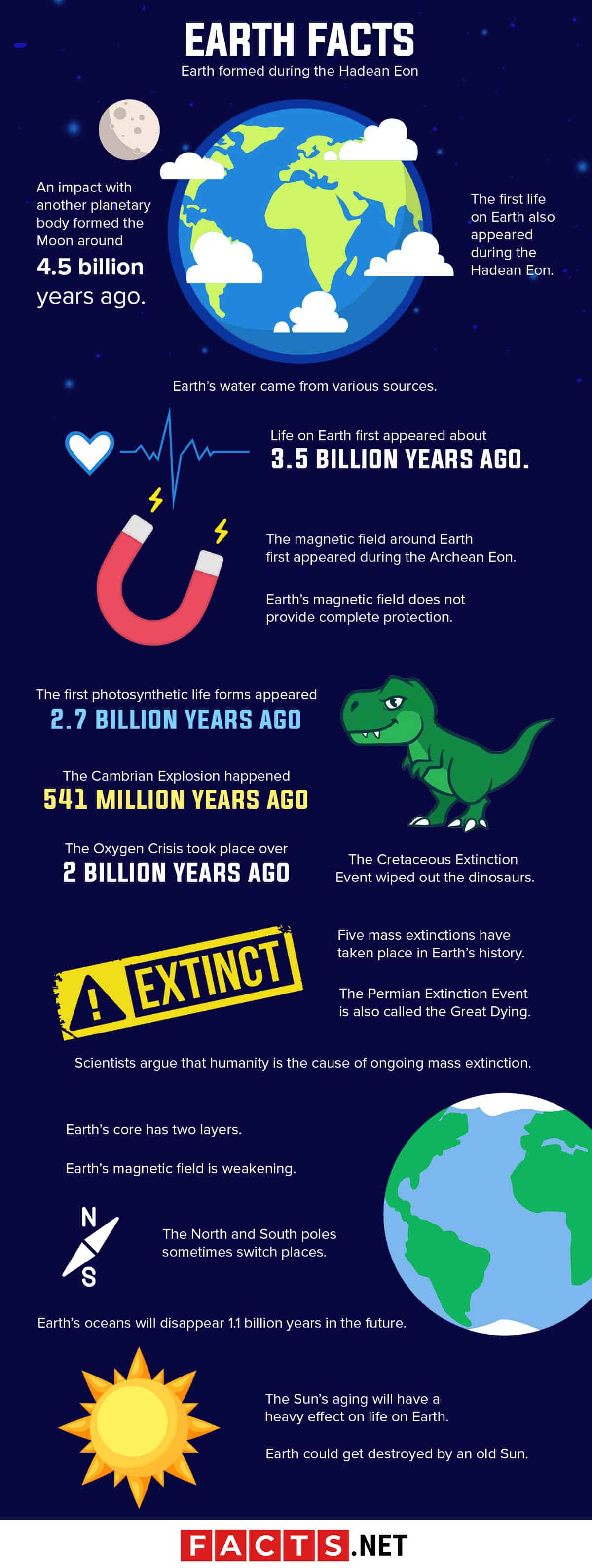
The Earth's continents were once joined together in a supercontinent called Pangaea. Over time, the continents have drifted apart due to plate tectonics and are still moving today at a rate of several centimeters per year.
Earthquakes and Volcanoes

Earthquakes and volcanoes are caused by the movement of tectonic plates. When plates collide or slide past each other, they can cause earthquakes and volcanic eruptions. The Earth is also home to over 1,500 active volcanoes and experiences over 50,000 earthquakes each year.
Atmosphere
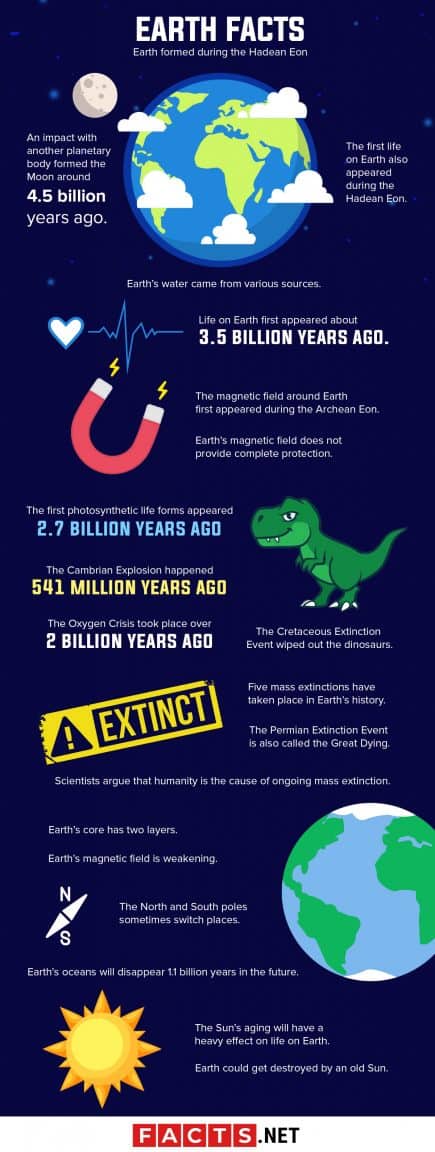
The Earth's atmosphere is composed of several layers: the troposphere, stratosphere, mesosphere, thermosphere, and exosphere. The atmosphere protects the Earth from harmful radiation and provides the air we breathe.
Water

The Earth is often called the "blue planet" because of its abundance of water. Approximately 71% of the Earth's surface is covered in water, with 97% of that water being found in the oceans. The remaining 3% is freshwater, which is found in rivers, lakes, and underground aquifers.
Weather

The Earth's weather is influenced by many factors, including the amount of sunlight received, the Earth's rotation, and the distribution of land and water. Weather patterns are constantly changing and can be unpredictable, making it important to be prepared for severe weather events such as hurricanes, tornadoes, and blizzards.
Magnetic Field

The Earth has a magnetic field that is created by the movement of molten iron in the outer core. The magnetic field protects the Earth from harmful solar winds and helps to create the auroras in the Earth's atmosphere.
Conclusion
In conclusion, the Earth is a fascinating planet with a rich history and many unique features. From its layers to its weather patterns, the Earth provides us with a glimpse into the complexity and beauty of our universe.
Related video of Facts About The Earth

Introduction
King Richard I was a medieval king of England who lived in the 12th century. He is also known as Richard the Lionheart or Coeur de Lion. He was a brave and skilled warrior who fought in the Third Crusade. He is still remembered today for his heroic deeds and his contribution to English history.
Early Life

Richard was born on September 8, 1157, in Oxford, England. He was the third son of King Henry II and Queen Eleanor of Aquitaine. He had two older brothers, Henry and Geoffrey, and two younger brothers, John and William. As the third son, Richard was not expected to become king.
Education

Richard was educated by his mother, who was a highly educated woman. He also received formal education at the University of Oxford. He was fluent in several languages, including French, Latin, and Occitan.
Coronation

Richard became king of England on July 6, 1189, after the death of his father, King Henry II. He was crowned on September 3, 1189, at Westminster Abbey.
Third Crusade
Richard is best known for his role in the Third Crusade. He joined the Crusade in 1190 and fought against the Muslim armies in Palestine. He was a brave and skilled warrior who won several battles against the Muslims. He also negotiated a treaty with Saladin, the Muslim leader, which allowed Christian pilgrims to visit the holy sites in Jerusalem.
Capture and Ransom

On his way back from the Crusade, Richard was captured by Leopold V, Duke of Austria. He was held prisoner for over a year and was released only after a huge ransom was paid. The ransom was raised by the people of England, who saw Richard as a hero.
Death

Richard died on April 6, 1199, at the age of 41, in Châlus, France. He was killed by an arrow that pierced his shoulder and went deep into his chest. He was buried at the Fontevraud Abbey in France.
Legacy
Richard is remembered as a great warrior and a hero of England. He was a skilled military leader who won several battles against his enemies. He is also known for his chivalrous behavior and his sense of justice. He is still celebrated today in England and around the world.
Conclusion
King Richard I was a medieval king of England who lived in the 12th century. He was a brave and skilled warrior who fought in the Third Crusade. He is still remembered today for his heroic deeds and his contribution to English history.
Related video of Facts About King Richard I

Cursive writing is a form of handwriting that has been around for centuries. It is still being taught in schools today, although some argue that it is becoming a lost art. In this article, we will explore some interesting facts about cursive writing.
What is cursive writing?

Cursive writing is a style of handwriting where the letters are joined together in a flowing manner. This style of writing is also known as script or longhand. It is used to write letters, notes, and other forms of written communication.
When did cursive writing originate?
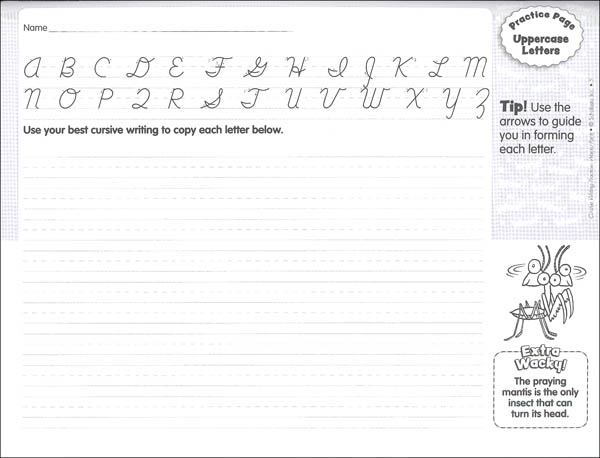
The first known use of cursive writing dates back to the 8th century, in the form of the Carolingian minuscule script. This style of writing was developed in the Holy Roman Empire and was used throughout Europe for centuries.
Why is cursive writing important?
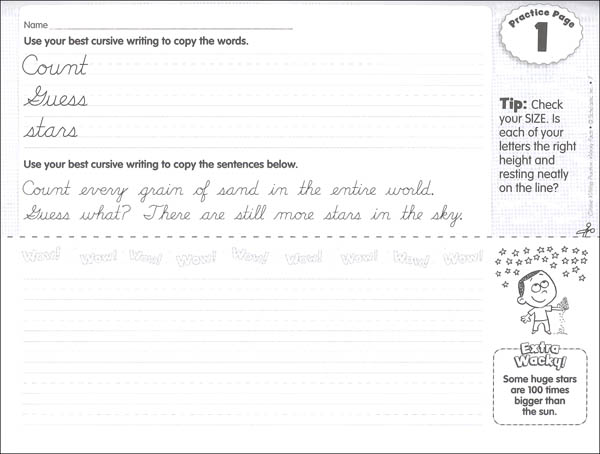
Cursive writing is important for several reasons. It helps to improve fine motor skills, hand-eye coordination, and cognitive development. It also allows for faster and more efficient writing, which can be useful in many different situations.
Is cursive writing still taught in schools?
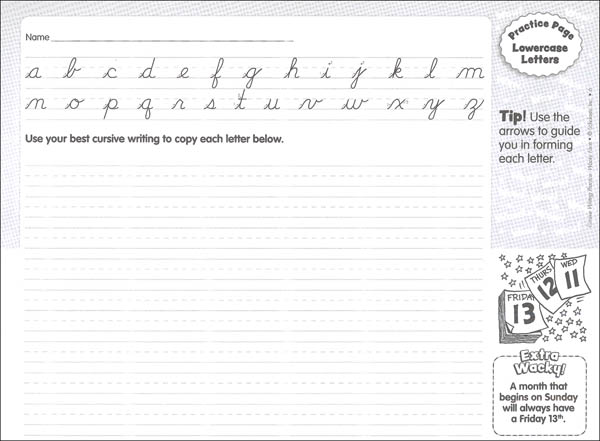
Although cursive writing is no longer a requirement in many schools, it is still being taught in some. Some educators believe that cursive writing is an important skill for students to learn, while others argue that it is becoming obsolete in the digital age.
What are the benefits of learning cursive writing?
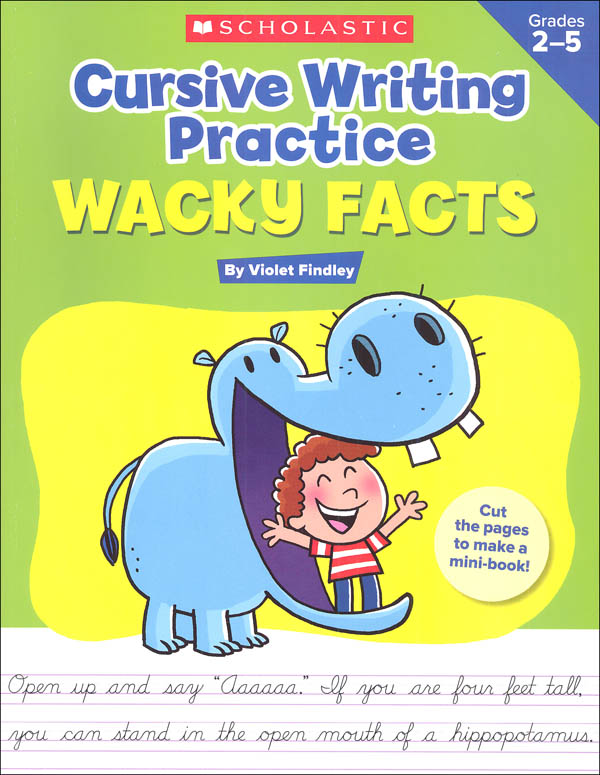
Learning cursive writing has several benefits. It can improve hand-eye coordination, fine motor skills, and cognitive development. It can also help students to write faster and more efficiently, which can be useful in many different situations.
What are some common cursive writing styles?
There are several different cursive writing styles, including:
- Palmer Method
- D'Nealian
- Zaner-Bloser
- Spencerian
Is cursive writing becoming obsolete?

Some argue that cursive writing is becoming obsolete in the digital age, as more and more communication is done through electronic devices. However, others believe that cursive writing is still an important skill to learn, as it can improve cognitive development and fine motor skills.
What are some tips for improving cursive writing?
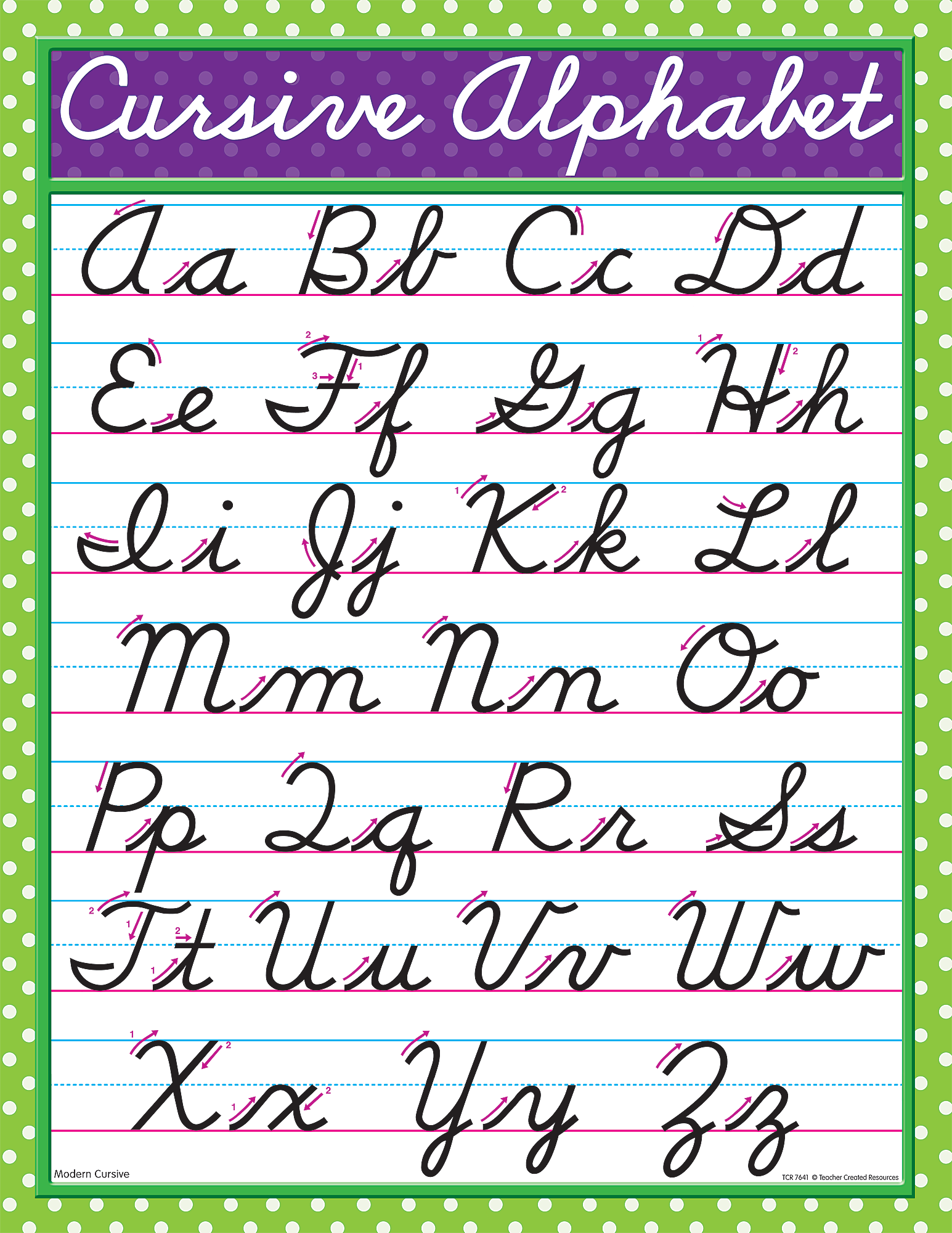
Here are some tips for improving cursive writing:
- Practice regularly
- Use the correct grip and posture
- Write slowly and deliberately
- Focus on consistency and legibility
What are some common cursive writing mistakes?

Some common cursive writing mistakes include:
- Inconsistent letter size and spacing
- Difficulty with certain letter formations (such as capital G or Q)
- Illegible handwriting
- Incorrect grip or posture
What are some fun ways to practice cursive writing?

Here are some fun ways to practice cursive writing:
- Write letters to friends and family
- Keep a journal or diary
- Create artwork using cursive writing
- Write poetry or song lyrics
What are some famous examples of cursive writing?
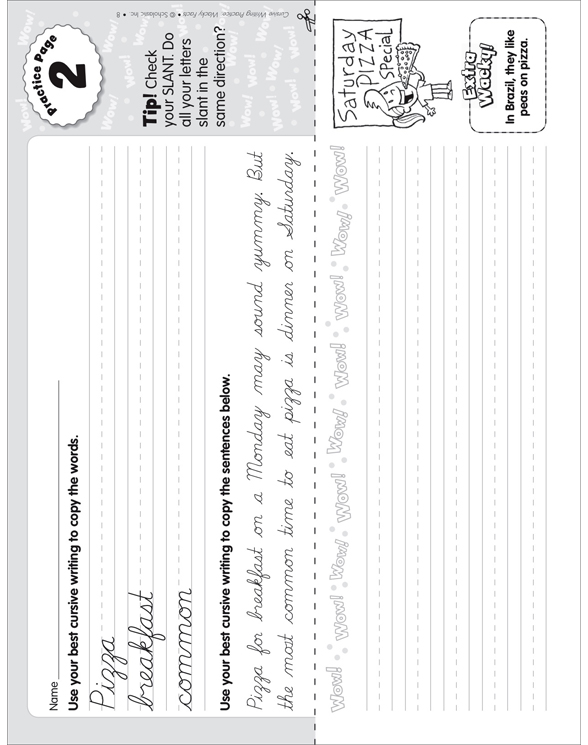
Some famous examples of cursive writing include:
- The signature of John Hancock on the Declaration of Independence
- The handwriting of Leonardo da Vinci
- The cursive writing of Jane Austen in her letters and manuscripts
- The handwriting of Albert Einstein in his personal papers
Conclusion
Cursive writing is a beautiful and useful form of handwriting that has been around for centuries. Although it is no longer a requirement in many schools, it is still being taught in some. Learning cursive writing can improve fine motor skills, hand-eye coordination, and cognitive development. It can also allow for faster and more efficient writing. Whether you are a student, an artist, or just someone who loves handwriting, cursive writing is a valuable skill to have.
Related video of Facts About Cursive Writing
Apples are one of the most popular fruits in the world. They are delicious, nutritious, and easy to eat. However, not many people know much about apple seeds. In this article, we’ll explore some interesting facts about apple seeds.
What are Apple Seeds?
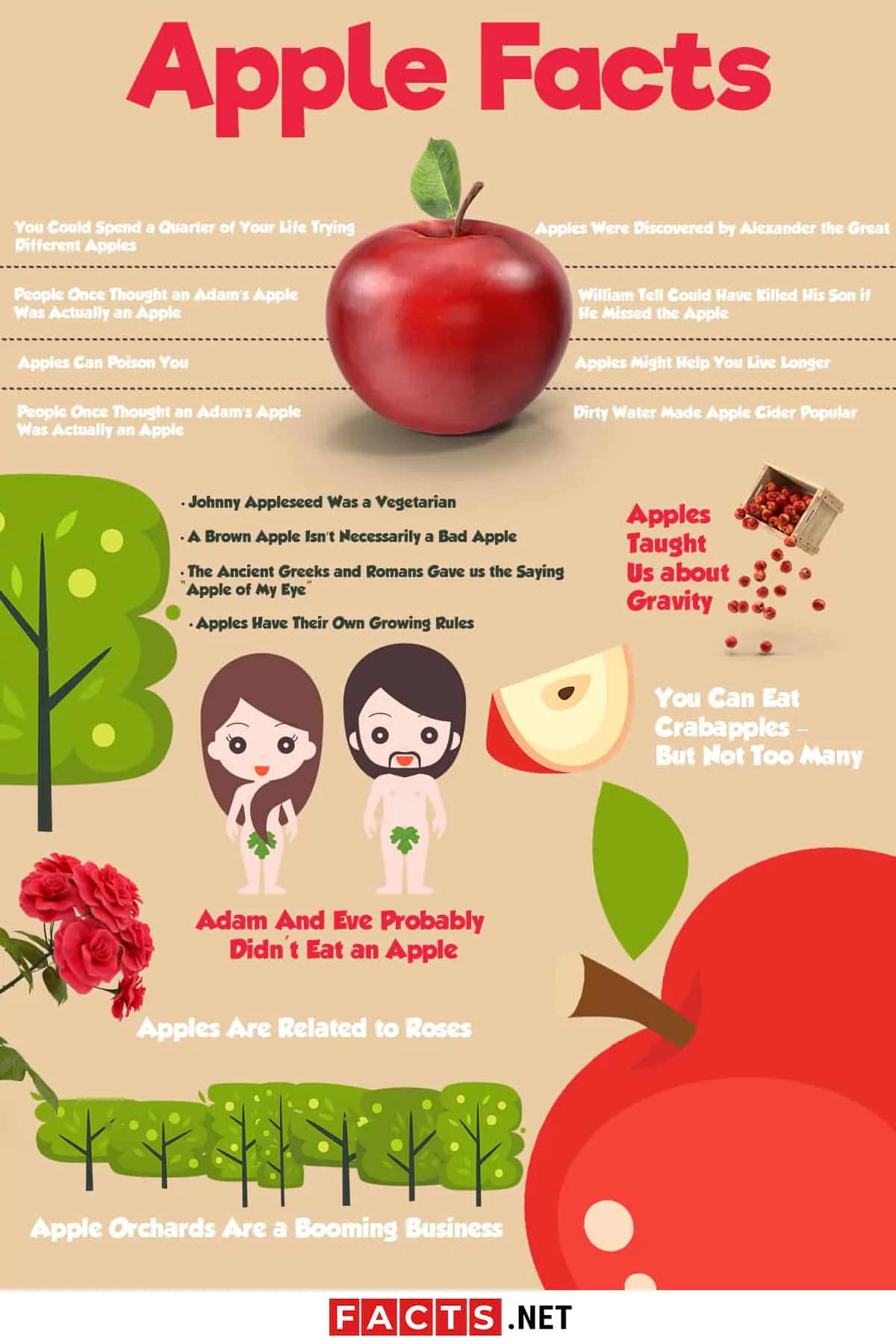
Apple seeds are the small, brown seeds found in the core of an apple. They are about the size of a watermelon seed and have a hard, shiny outer coating. Each apple can contain up to 10 seeds.
Are Apple Seeds Poisonous?

Contrary to popular belief, apple seeds are not poisonous. They contain a small amount of amygdalin, a cyanide and sugar compound. However, the amount of cyanide in apple seeds is not enough to harm humans. Eating a few apple seeds is unlikely to cause any harm. However, consuming large amounts of apple seeds can be dangerous.
Can Apple Seeds be Eaten?

Apple seeds can be eaten, but they are not very tasty. They have a bitter taste and are difficult to chew. Some people grind them up and add them to smoothies or other recipes, but this is not recommended in large quantities.
What are the Benefits of Apple Seeds?

Apple seeds are rich in antioxidants and fiber. They also contain minerals such as calcium, potassium, and magnesium. Some research has suggested that apple seeds may have anti-inflammatory and anti-cancer properties, but more studies are needed to confirm these benefits.
What are the Risks of Eating Apple Seeds?
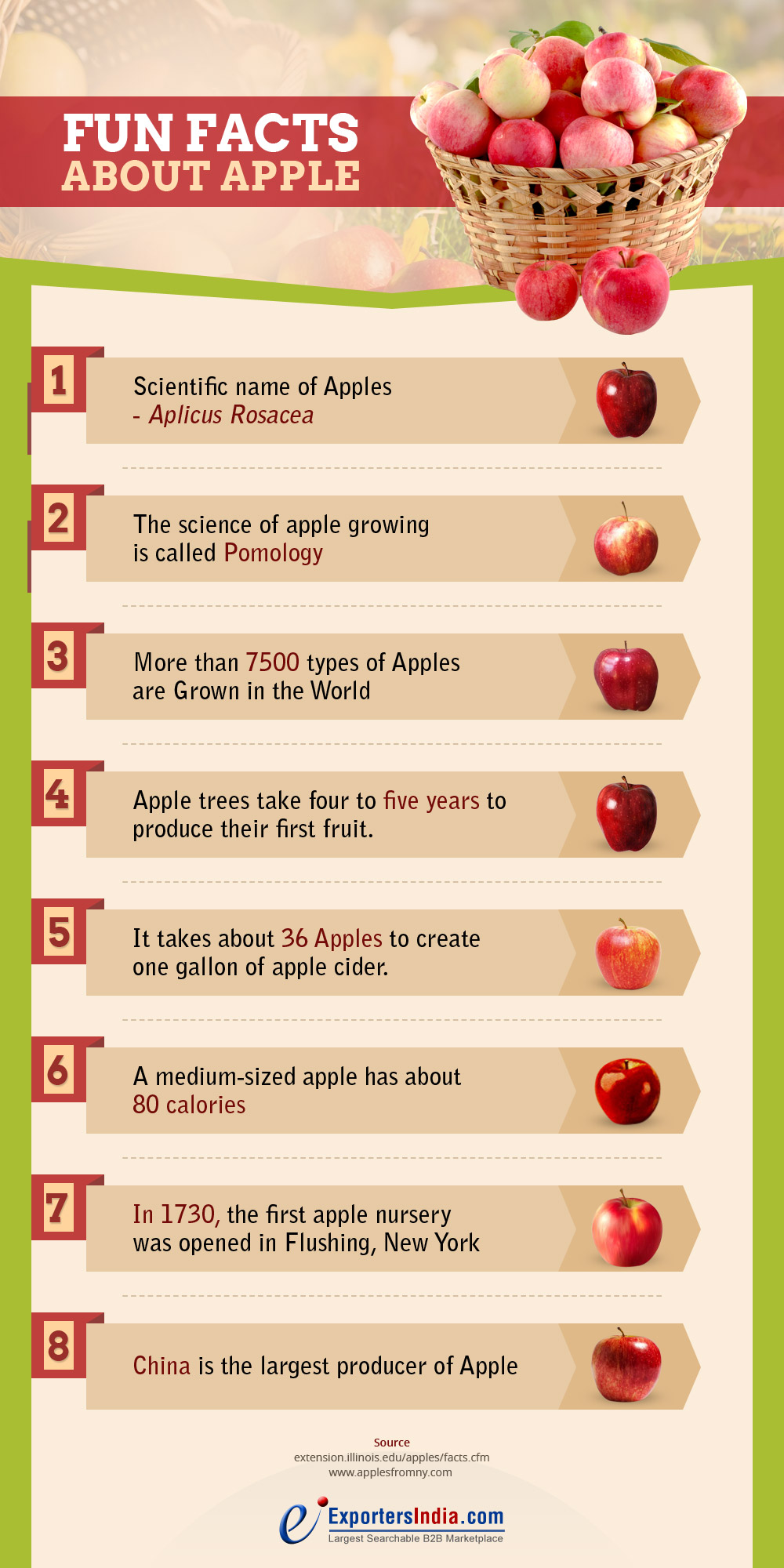
The risks of eating apple seeds are minimal, but they do exist. As mentioned earlier, apple seeds contain a small amount of cyanide. Consuming large amounts of apple seeds can cause cyanide poisoning. Symptoms of cyanide poisoning include headache, dizziness, confusion, vomiting, and difficulty breathing.
How Many Apple Seeds Would You Need to Eat to Get Cyanide Poisoning?
The amount of apple seeds you would need to eat to get cyanide poisoning varies depending on your weight and other factors. However, as a general rule, you would need to eat about 200 apple seeds to get cyanide poisoning. This is equivalent to eating the seeds from about 20 apples.
What Should You Do If You Think You’ve Eaten Too Many Apple Seeds?
If you’ve eaten a few apple seeds, don’t worry. You’ll most likely be fine. However, if you’ve eaten a large amount of apple seeds and are experiencing symptoms of cyanide poisoning, you should seek medical attention immediately.
Conclusion
Apple seeds are an interesting part of the apple that many people don’t know much about. While they are not poisonous, they should be consumed in moderation. Eating a few apple seeds is unlikely to cause any harm, but consuming large amounts can be dangerous. If you’re concerned about the risks of apple seeds, it’s best to avoid them altogether.
Related video of Facts About Apple Seeds

Who is Brenda Lee?
Brenda Lee is a famous American singer who rose to fame in the 1960s with hits like "I'm Sorry" and "Rockin' Around the Christmas Tree." She has sold over 100 million records worldwide and is considered one of the most successful female singers of all time.

Did Brenda Lee sing "Sweet Nothin's"?
Yes, Brenda Lee did sing "Sweet Nothin's." The song was released in 1960 and became a hit for her. It reached number four on the US Billboard Hot 100 chart and has since become a classic of the era.

Did Brenda Lee sing "I'm Sorry"?
Yes, Brenda Lee did sing "I'm Sorry." The song was released in 1960 and became a massive hit for her. It reached number one on the US Billboard Hot 100 chart and has since become one of her signature songs.

Did Brenda Lee sing "Rockin' Around the Christmas Tree"?
Yes, Brenda Lee did sing "Rockin' Around the Christmas Tree." The song was released in 1958 and became a holiday classic. It has since been covered by many artists and is played every year during the Christmas season.
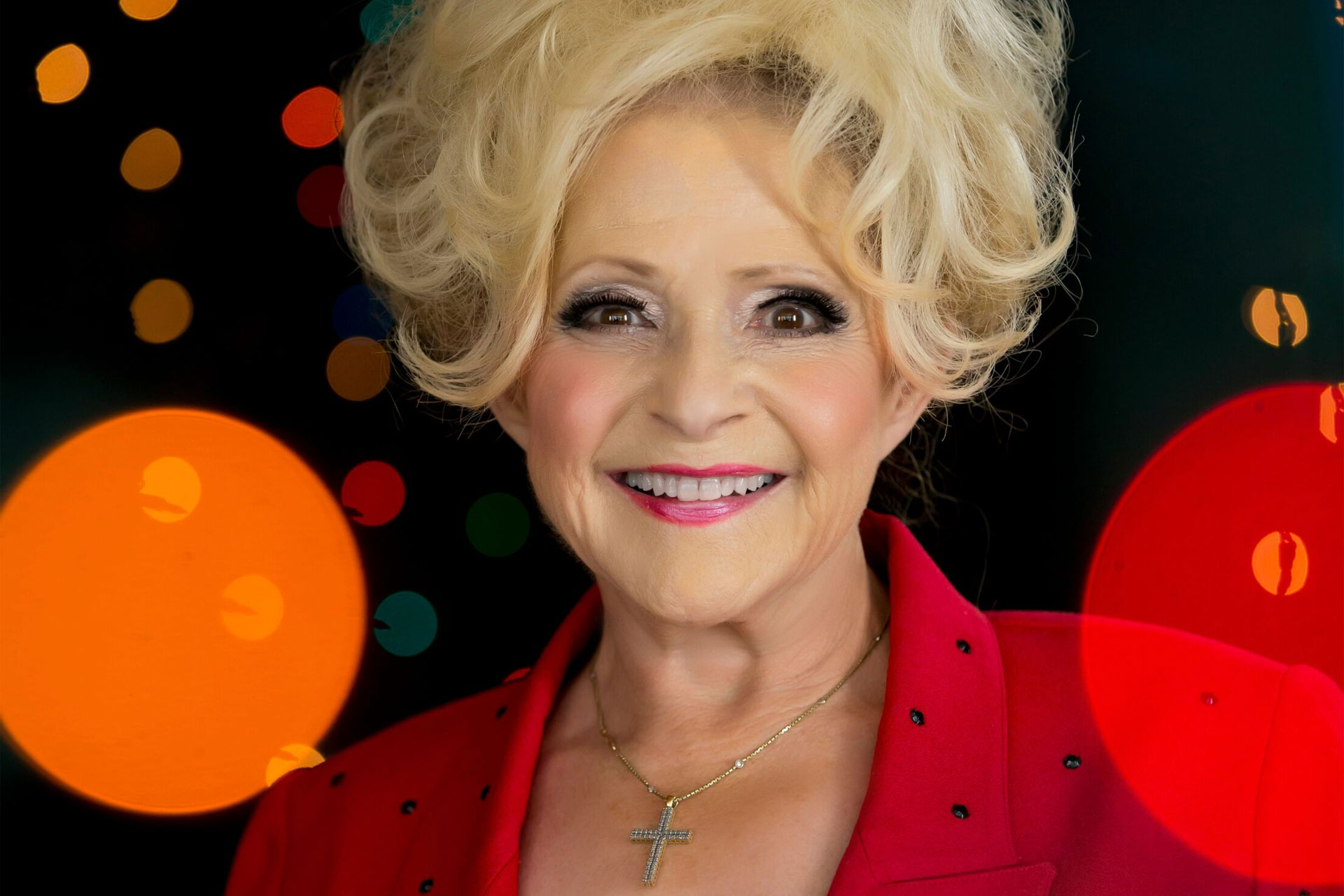
Did Brenda Lee win any awards?
Yes, Brenda Lee has won many awards throughout her career. She has won three Grammy Awards, including one for Lifetime Achievement. She has also been inducted into the Country Music Hall of Fame and the Rock and Roll Hall of Fame.
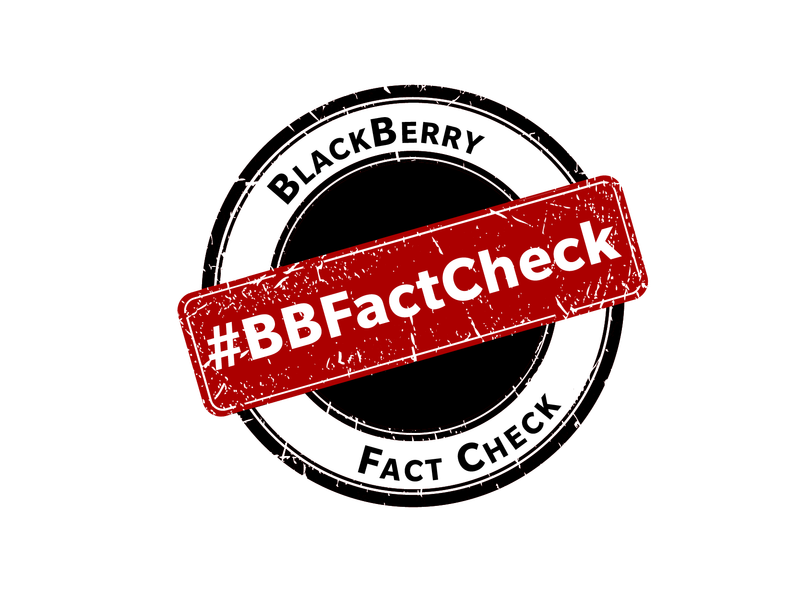
Is Brenda Lee still alive?
Yes, Brenda Lee is still alive. She was born on December 11, 1944, which makes her 76 years old as of 2021. Although she may not be as active in the music industry as she once was, she continues to perform and make appearances.

Conclusion
Brenda Lee is a legendary singer who has had an incredible career in the music industry. She has produced many classic songs that continue to be popular today. Despite her many accomplishments, she remains humble and grateful for her success. As she continues to inspire new generations of artists, her legacy will live on for years to come.
Related video of Fact Check Brenda Lee

Introduction
Francis Scott Key Fitzgerald, popularly known as F. Scott Fitzgerald, was one of the most celebrated American writers of the 20th century. He was a master of the Jazz Age and the Roaring Twenties. He wrote several novels and short stories, including The Great Gatsby and This Side of Paradise. However, his life was marked by personal struggles, including his tumultuous relationship with his wife.Meeting Zelda Sayre
Fitzgerald met his future wife, Zelda Sayre, in Montgomery, Alabama, in 1918. At that time, Fitzgerald was an army officer stationed in Montgomery. He was immediately smitten with Zelda, who was known for her beauty and vivacious personality. Zelda, on the other hand, was intrigued by Fitzgerald's charm and intelligence.
Courtship and Marriage
Fitzgerald and Zelda's courtship was intense and passionate. They were engaged in 1919, but their wedding was delayed due to Fitzgerald's financial troubles. Finally, they got married on April 3, 1920, in St. Patrick's Cathedral in New York City. Their marriage was the talk of the town, as they were considered one of the most glamorous and fashionable couples of their time.Their Life Together
Fitzgerald and Zelda's life together was tumultuous and marked by excesses. They lived a lavish lifestyle, partying and drinking heavily. Fitzgerald was also a chronic alcoholic, which led to frequent fights and arguments between the couple. However, they were deeply in love and had a strong emotional bond.
Zelda's Mental Health Issues
Zelda suffered from mental health issues, including depression and schizophrenia. Her condition worsened over time, and she was eventually diagnosed with bipolar disorder. Fitzgerald was very supportive of his wife and tried to help her in every possible way. However, their relationship suffered as a result of Zelda's illness.Zelda's Creative Contributions
Zelda was not just Fitzgerald's wife; she was also his muse and creative collaborator. She inspired many of Fitzgerald's characters, including Daisy Buchanan in The Great Gatsby. She also wrote several novels and short stories of her own, although her work was often overshadowed by her husband's fame.
Separation and Reconciliation
Fitzgerald and Zelda's marriage suffered a major setback in the 1930s, when Fitzgerald had an affair with a Hollywood actress. Zelda was devastated and suffered a nervous breakdown. They separated for a while, but eventually reconciled. However, their relationship was never the same again.Zelda's Tragic End
Zelda's mental health continued to deteriorate, and she spent several years in mental institutions. In 1948, she died in a fire at Highland Hospital in Asheville, North Carolina. She was only 47 years old. Fitzgerald was devastated by her death and never fully recovered from the loss.Fitzgerald's Legacy
Fitzgerald's life and work continue to inspire and fascinate people around the world. His novels and short stories are considered classics of American literature, and his depictions of the Jazz Age and the Roaring Twenties are iconic. His relationship with Zelda is also a subject of fascination for many, as it reflects the glamour and excesses of that era.Conclusion
F. Scott Fitzgerald and Zelda Sayre were one of the most famous and glamorous couples of the 20th century. Their relationship was marked by passion, excess, and tragedy. Although their marriage was tumultuous, their love for each other was deep and enduring. Their lives and works continue to inspire and fascinate people around the world.Related video of F Scott Fitzgerald Spouse
ads
Search This Blog
Blog Archive
- August 2022 (31)
- July 2022 (31)
- June 2022 (31)
- May 2022 (31)
- April 2022 (29)
- March 2022 (31)
- February 2022 (28)
- January 2022 (31)
- December 2021 (7)
About Me
